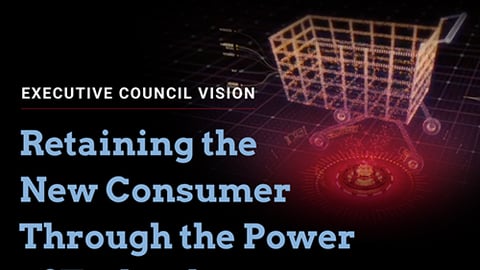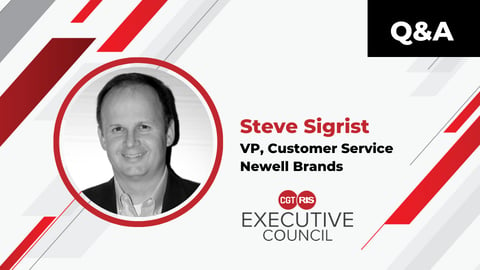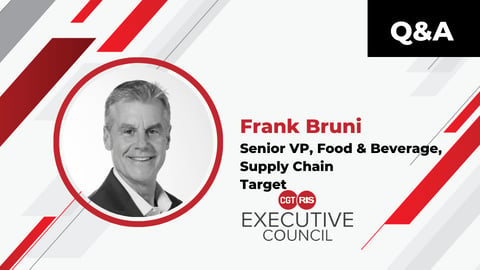Predicting the Future of Frictionless E-Commerce: Up Close with ChannelAdvisor’s Mike Shapaker
While it’s unclear how much of the pandemic-prompted digital disruption has staying power, it’s safe to say consumers have gotten a taste of the potential of tech-enabled convenience, and they like what they see.
From ChannelAdvisor CMO Mike Shapaker’s perch, the tech that can power some of the most exciting experiences has already arrived; it’s refining the execution that will be key moving forward. And although he’s spent most of his career at ChannelAdvisor, Shapaker has worn a number of hats as he’s shaped the organization from a start-up into a global commerce platform — including managing the professional services, business operations and product management teams, as well as serving as managing director of EMEA.
As a result, this variety of perspective has afforded him an ability to see e-commerce’s potential from nearly every angle. We chatted with Shapaker, who’s a member of the CGT/RIS Executive Council, about the brands giving third-party marketplaces a second look, the e-comm metrics that should live on their dashboards, and the technologies we should all have on our radars.
CGT: ChannelAdvisor conducted a fair amount of research into consumer behavior shifts during the pandemic. What are some of the changes that you found particularly striking?
One of the questions we asked consumers is to predict how COVID-19 might impact their future purchasing habits. Among the feedback we received, 44% of respondents over the age of 45 predicted they would shop online more than before. Nearly 60% of respondents under 45 said the same.
EC Member Shares
How long have you been with ChannelAdvisor?
More than 16 years
What has been your “pandemic pastime?”
I’ve read more books and dabbled at guitar. If the guitar could talk, it wouldn’t have nice things to say.
As travel becomes safer, where are you looking forward to visiting?
My first flight is to see my parents for my dad’s 80th birthday. He has more hair than I do, but thankfully he doesn’t rub that in.
Favorite Netflix/Amazon/Hulu binge series?
“The Office.” I’m a bit behind the times.
Which book is on your nightstand or to-do list?
“Thinking, Fast and Slow” by Daniel Kahneman
This isn’t too surprising, though, as it just represents an acceleration of an existing trend. At the time, 45% of respondents said they were spending more time shopping on Amazon and 35% said they were shopping more on other marketplaces such as eBay and Walmart.
Particularly interesting is the uptake in shopping behaviors that had much lower penetration before COVID. Specifically, about 50% of respondents under 45 and 20% over 45 suggested they would shop online for groceries more frequently in the future. And, at the time of the survey, 59% indicated that they had used buy-online-pickup-in store or curbside pickup since the beginning of the pandemic.
CGT: Do you think they're here to stay?
Now that more people have experienced the convenience and time savings from these new habits, I think a lot of the changes are here to stay. However, we may not see online grocery or curbside pickup used at the same rate as during the height of the pandemic. Part of that will be the result of some, probably smaller, retailers pulling back on offering those services if they aren’t financially viable for their businesses in the short term.
The other part is from consumer behavior. Taking myself as an example, I did not take advantage of online grocery shopping in the United States prior to COVID. And now that things are getting better, I’m back in the grocery stores more. But I’m still using both pickup and delivery services on a regular basis. It’s easier and takes less time.
CGT: Your experience includes oversight over predictive analytics. How would you rate the maturity of this technology for most consumer goods companies?
In terms of consumer goods companies, I think the maturity is correlated with company size and investment. Some of the larger retailers and brands may have a good idea when I’m going to buy my next jar of spaghetti sauce even before I do. Smaller brands without access to all the data or systems are probably behind.
CGT: Beyond maturity, what about its outlook and/or the level of interest?
The level of interest is high. The holy grail would be the ability to perfectly predict your business so you can have just the right amount of supply to enable just the right amount of inventory for all of your current and future demand, which is growing. Reality has a funny way of getting involved, though, no matter how good your predictive analytics are.
At the end of 2019, we all took toilet paper for granted. Several months later, supply chains were disrupted, demand was through the roof, and there were more Elvis sightings than there were packages of toilet paper on the store shelves. And though the toilet paper issue was resolved, supply chains are still trying to recover across many other industries, as we have seen with the chip shortage impacting the auto industry. Black swan events can wreak havoc with even the best models.
CGT: What are the e-commerce metrics you think brands can derive the most value from and should be prioritizing if they're not already?
The primary goal of nearly every business is to sell more at an acceptable profit margin. Most metrics tie back to that goal. So, as a brand, the first step is to monitor product assortment and availability at all retail partners and direct-to-consumer channels. Are my products in stock and available for sale?
Next, you need eyeballs on those products if you want sales. Key metrics to monitor in this area include digital shelf/search performance results on key retail sites, Buy Box attainment on Amazon, product page impressions, and ad impressions/clicks. For paid traffic, you need to pay attention to return on ad spend (ROAS) and how that impacts overall profitability.
The next layer of metrics helps answer the “why” questions — why isn’t my product getting the traffic it needs or why isn’t the traffic converting? Key metrics here include prices, product content quality, product reviews and ratings and how all of these metrics stack up relative to the competition. These metrics can impact both how discoverable your products are and how compelling the offers are for consumers.
CGT: What are some of the emerging technologies that you think will effect the most change in the next 5-10 years?
The trend over the last several years is that it has become faster and easier to get something we want. We can place an order and it appears the next day or even the same day. Amazon Prime has been the driver of this trend. It’s one of the few companies in the world that has the ability to build out the infrastructure needed to do this on its own. But it’s expensive and prohibitively expensive for most other companies.
Looking forward over the next five to 10 years, I think we will see continued investment that allows all companies to get products into the hands of consumers faster, but in ways that are more sustainable financially. These efforts may include solutions to optimize inventory among warehouses and/or leverage local stores for fulfillment, robotics to better automate warehouses, and AR applications that help to minimize returns in categories such as fashion.
We can also expect to see technology that enables checkout-free experiences in-store, to reduce friction enough to close some of the gap with e-commerce, as well as demand aggregation to increase the ROI of a delivery.
These technologies exist today. A focus on refining the solutions and adoption will be required to make a difference. E-commerce is exciting. This is just one area of many in which new things are happening all of the time.
CGT: At a recent League of Leaders meeting, you noted the influx of brands now willing to give third-party retail marketplaces a try after years of resistance. What’s motivating them, and how is this playing out?
Bloomberg ran a story about a year ago in which they highlighted a number of brands that made this transition. Without getting into too many specifics on our customers, at a high level we typically see five primary use cases for brands using marketplaces.
We have large brand customers in home and garden, consumer electronics, and fashion, to name just a few examples, that use marketplaces to maximize their reach. These brands want to be on as many marketplaces as they can globally, including larger, general merchandise marketplaces or niche sites focused on the categories that make sense for their products.
Other brands focus more on just the leading marketplaces in a region or in their categories as part of a general channel strategy for the main product catalog and sometimes for refurbished or B-stock inventory.
Some brands use marketplaces as a backstop to their wholesale relationships with Amazon or Walmart, for example. As a third party, it’s possible to have more of the catalog on those sites than is often covered in a wholesale relationship. Also, a presence on the marketplaces helps brands keep an eye on who else is selling their products.
Newer or smaller brands that don’t have wholesale relationships use marketplaces to establish their brands and find new customers. Many have direct-to-consumer websites but, for some, marketplaces can be the initial or primary path to the consumer.
Finally, we have customers that leverage marketplaces primarily for geographic expansion. Marketplaces allow them to test demand before investing in more significant operations.
The bottom line is that we often see different reasons for brands using marketplaces and quite different strategies, but the overall trend is more and more brands taking the plunge.
CGT: What are you most optimistic about when it comes to the consumer goods and retail industries as we emerge from the pandemic?
The last 15 months have been bumpy, but we have seen tremendous innovation. We have seen new business models accelerated. Companies are figuring out how to make their supply chains better. I think the businesses that survived will be more resilient as we get back to normal.








